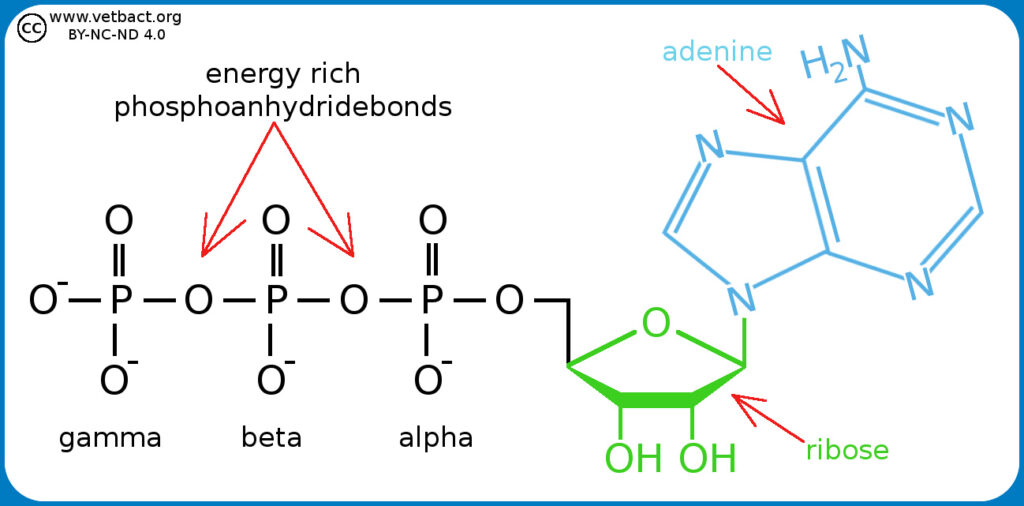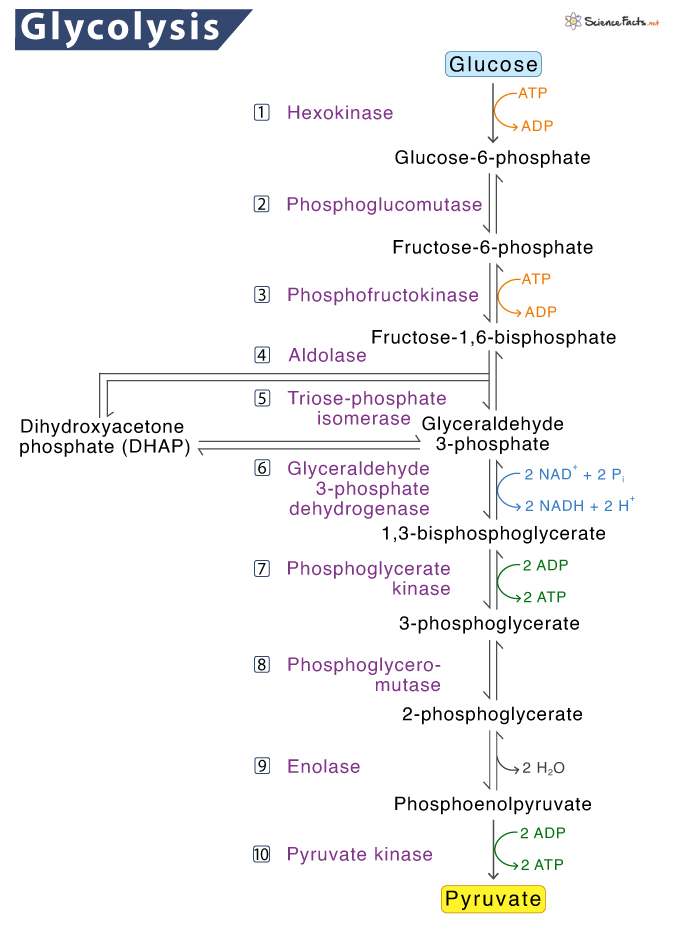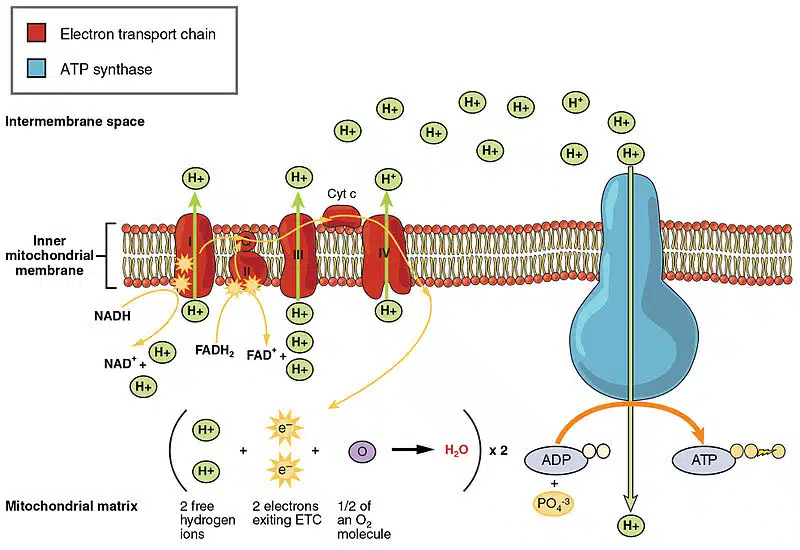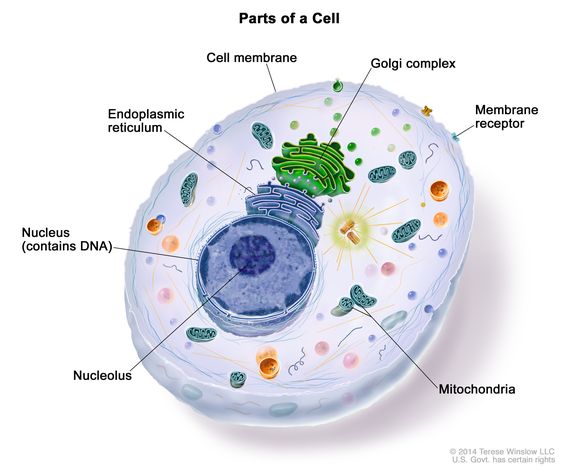General Cell Biology
Our cells are powerful bodies with what seem to be a low-level intelligence. These little bodies contain a cell membrane, which separates the extracellular space from the intracellular space, which allows the cell to maintain certain concentrations of different molecules without them diffusing away from the cellular machinery. There are organelles within the cell. These are like organs in our body. The kidneys filter our blood, the heart pumps our blood, and the lungs removing waste and bring in oxygen. These lower-level groups of tissues, put together, constitute an organism. Some organelles include the endoplasmic reticulum for calcium storage, the Golgi body for processing lipids and proteins, the nucleus for safeguarding DNA, and ribosomes for synthesizing proteins. Put together, these organelles make up the cell.
Energy in the Cell
In many chemical reactions, energy input is required for the reaction to occur. This energy input is necessary to break the chemical bonds of the reactants, which then allows new bonds to form to create the desired products. The amount of energy required to initiate a reaction is known as the activation energy. This activation energy can come from a variety of sources, including heat, light, and can be lowered by enzymes. Once the reaction has started and the activation energy has been supplied, the reaction can proceed on its own, releasing energy as heat or light. Some reactions, such as endothermic reactions, require a continuous input of energy to proceed, while others, such as exothermic reactions, release energy as they proceed. The amount and type of energy required for a reaction to occur depends on the specific reaction and the properties of the reactants involved.

If we zoom out from the chemist’s point-of-view, many biological processes require energy input. The most common energy “currency” in our biological system is adenosine triphosphate (ATP). When the gamma or beta-phosphate is hydrolyzed, energy is released, thus providing energy to reactions that require it.

Energy Production
Taking a step back, we can see that ATP is a source of potential energy for cellular reactions. But how do our cells get ATP? Well, making ATP requires energy input and can occur through two main pathways, substrate-level and oxidative phosphorylation. Phosphorylation is just adding a phosphate group to an existing molecule.
Substrate-level phosphorylation occurs during glycolysis, the breaking down of sugar, and the citric acid cycle. In both instances, a molecule that contains a phosphate group undergoes a reaction in which that phosphate group is directly transferred onto ADP (adenosine diphosphate) to make ATP.

Substrate-level phosphorylation only accounts for about 5% of total ATP production, which means the remaining 95% of ATP comes from oxidative phosphorylation. Oxidative phosphorylation occurs in the inner mitochondrial matrix and shuttles electrons through a chain of complexes, altogether called the electron transport chain (ETC). This creates a proton gradient, in which diffusion of the proton through ATP synthase (enzyme that makes ATP) results in ATP production.

Mitochondrial Function
Just like a computer infected with a virus, a car without oil, or a phone in low-battery mode, your mitochondria function declines with increased stress, protein availability, and oxidative damage. This decline in mitochondrial function can lead to less efficient ATP synthesis and an increase in reactive oxygen species (ROS) which can lead to DNA damage. This decline in mitochondrial function can come from a recent illness, chronic/acute stress, aging, or a plethora of reasons, including circadian dysregulation.
To combat this decline in mitochondrial function or to optimize ATP synthesis, a variety of compounds can be used. We will break down the roles of each compound individually as it relates to mitochondrial function or ATP synthesis.
Compounds for Supporting Mitochondrial Function
Alpha Lipoic Acid
Alpha lipoic acid (ALA) has been shown to upregulate mitochondrial biogenesis, the process by which cells increase the number and size of their mitochondria. This can enhance mitochondrial function and energy metabolism, and has been proposed as a potential strategy to improve mitochondrial function. Furthermore, ALA demonstrated anti-oxidant activity, thus protecting the mitochondria from oxidative damage.
L-Carnitine L-Tartrate
Carnitine increases the transport of fatty acids into the mitochondria, thus increasing ATP production, not through improving mitochondrial function but by optimizing its ability to use fatty acids.
Coenzyme Q-10
Coenzyme Q-10 (CoQ10) is involved in the ETC, the key process that generates ATP in the mitochondria. CoQ10 is required for transferring electrons from complex I and II to complex III in the ETC, which is critical for ATP production.
CoQ10 has been shown to stimulate mitochondrial biogenesis. This can enhance mitochondrial function and energy metabolism. CoQ10 levels decline with age and in various diseases, and supplementation with CoQ10 has been shown to improve mitochondrial function and reduce oxidative stress in animal and human studies.
MOTS-c
Mitochondrial Open Reading Frame of the 12S rRNA-c (MOTS-c) and is a 16-amino acid peptide that is encoded by a mitochondrial gene. This peptide can stimulate mitochondrial biogenesis and has also shown potent antioxidant properties. Interestingly, this peptide can improve insulin sensitivity by AMPK signaling in skeletal muscle.
Creatine
Creatine is an extremely popular supplement, usually used in the fitness community and is a staple ingredient in almost any worthwhile pre-workout supplements. Creatine acts as ATP storage. During anaerobic exercise, the cell no longer has adequate oxygen supply, therefore the cell depends on alternative forms of making ATP. One such way is through creatine and creatine kinase. By increasing creatine in your skeletal muscle, you allow the muscle to have a little extra ATP during times of physical stress. Creatine has also been shown to prevent structural damage of mitochondria during stress.
Vitamin B3, NR, NMN, NAD+
NAD is a coenzyme involved in redox reactions, making it vital to energy metabolism. It is directly involved in glycolysis and the citric acid cycle. It also seems that as we age, our NAD+ levels decline, making energy metabolism less efficient. The issue is that NAD+ is a polar molecule, unable to cross the cell membrane without the help of transporters. The equilibrative nucleoside transporter (ENT) family of proteins can shuttle NAD from the blood/lumen into the cell, however, increasing NAD above supraphysiological levels may not yield any beneficial returns in energy because of ENT bottleneck. To overcome this obstacle, we can supplement with primitive forms of NAD, molecules such as vitamin B3, NR, or NMN. These molecules can be transformed into NAD. The evidence behind supplementation of these molecules is shaky, therefore, experimenting with different dosages and combinations of these compounds may yield the best result for you.
Methylene Blue
Methylene blue has also been studied for its potential therapeutic effects on a range of conditions, including neurodegenerative diseases and mood disorders. It has been shown to have antioxidant and anti-inflammatory properties, and to improve mitochondrial function and energy metabolism.
One of the key mechanisms of methylene blue is its ability to act as an electron carrier in the mitochondrial respiratory chain, which handles the production of ATP. Methylene blue can accept electrons from the respiratory chain and donate them to oxygen, helping to maintain mitochondrial function and energy metabolism.
Conclusion
Using exogenous compounds such as methylene blue, creatine, CoQ10, and carnitine can support mitochondrial function. By supporting mitochondrial function, energy levels in the cell can be properly regulated, thus enhancing well-being and performance. This list of supplements may serve useful for folks whom are above 40 years of age, or anyone looking to optimize their energy.

Meet the Author
Hello everyone,
My name is Joshua Giblin. I am a post-bachelor researcher/research technician at USC. My interests range from nutrition to nanomedicine and also practical science to improve everyday life. Through this blog, I aim to communicate practical scientific research and present it to curious individuals so that an educated decision can be made. Thank you for reading the blog and showing your support.
Disclaimer
This is not medical advice, as I am not a board certified medical doctor. I do not directly recommend taking any compound without the reader doing their own research, assessing the risks, and when warranted, speaking to their physician.
